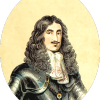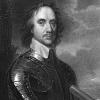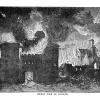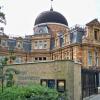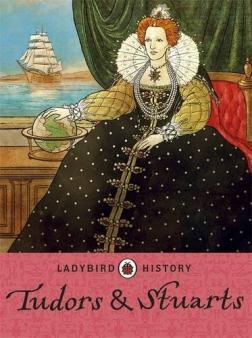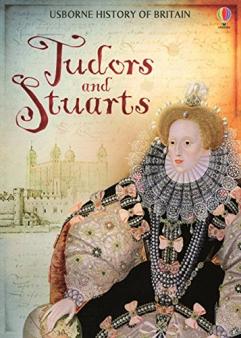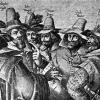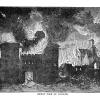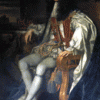King Charles II
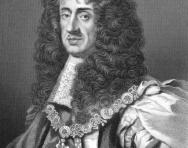
Known amongst his people as the ‘Merry Monarch’, Charles II was the third Stuart King of England and reigned until his death on 6 February 1685.
He was the son of Charles I, who was beheaded in 1649. Although Charles I was the king, he was defeated by Oliver Cromwell who then took charge of the country. Cromwell banned dancing, theatres and even Christmas.
The English people were relieved when Charles II finally returned to England in 1660 to regain the throne and be crowned. This period of history became known as the Restoration as it marked the monarchy (the King) being in power again.
Top 10 facts
- Charles II was born on 29 May 1630. He was the son of King Charles I and Henrietta Maria from France. Their first son, born about a year before Charles, had died aged less than a day.
- Charles’ mother, Henrietta, was the sister of King Louis XIII of France.
- Charles II’s father was beheaded in 1649. Charles I was the only English monarch to be executed by his own people.
- Charles II was the third Stuart King of England.
- Charles II spent much of his early adult life in France. After the civil war and the execution of his father, he did not dare to return to England.
- Charles II was crowned King of Scotland on 1 January 1651 in Scone and as King of England on 23 April 1661 at Westminster Abbey.
- Charles II was known as the ‘merry monarch’.
- Charles II was a tall man, over 6 feet, and was said to be both calm in temperament and handsome!
- Charles II married Catherine of Braganza, a Portuguese princess, in 1662. The couple never had children but the King wasn’t a faithful husband. He had many affairs and had more than 12 illegitimate (a child born to parents not married to each other) children.
- Charles II died on 6 February 1685. He was 54 years old.
Timeline
- 29 May 1630Charles II was born.
- 1649Charles II’s father, Charles I was beheaded in 1649.
- 1650Charles II was defeated by Oliver Cromwell at Dunbar.

- 1 January 1651Charles II was crowned King of Scotland in Scone.
- 1651The Battle of Worcester took place, where Charles II was finally defeated by Oliver Cromwell. This is where he famously hid in an old oak tree!
- 29 May 1660Charles II finally arrived back in London to regain the English crown on his 30th birthday.

- 23 April 1661Charles II was crowned King of England at Westminster Abbey.

- 1662Charles II married Catherine of Braganza, a Portuguese princess.
- 1664A war with the Dutch began.
- 1665The Great Plague hit London, killing thousands of people.
- 1666The Great Fire of London broke out.

- 1675The Royal Observatory was founded by Charles II in 1675.

- 6 February 1685Charles II died. He was succeeded to the throne by his younger brother James, who became King James I.
- 15 July 1685Charles II’s eldest illegitimate son, James the Duke of Monmouth, tried to use force to gain the throne but he was executed for treason.

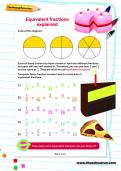
Boost Your Child's Learning Today!
- Start your child on a tailored learning programme
- Get weekly English & maths resources sent direct to your inbox
- Keep your child's learning on track
Did you know?
- After Charles I was executed, Oliver Cromwell took charge of the country. He banned dancing, theatres, pubs, gambling, maypoles and even Christmas. Luckily for the people of England, Charles II liked to party!
- Charles II brought peace to the people of England. Christmas was celebrated again and theatres were reopened.
- Charles II promised to punish the men responsible for his father’s death and was true to his word. He had the bodies of Oliver Cromwell, Henry Ireton, Thomas Pride and John Bradshaw dug up and they were hung at Tyburn. Oliver Cromwell’s body was beheaded and his head was stuck on a pike at London Bridge after it was paraded through the streets of the capital.
- Charles II liked to spend! He became known for spending huge amounts of money and was responsible for leaving the bank accounts of England rather empty.
- Charles II was a Catholic at heart and during his reign he tried to relax the laws against the Catholics. He lived his life as a Protestant, however, and only converted to Catholicism on his deathbed as he didn’t think the people would have welcomed a Catholic King.
- Charles II was a big dog lover and had a spaniel he was very fond of – so much so that he played with the dog during council meetings! The breed of dog became hugely popular after the King showed such an interest and was as a consequence named after him: the King Charles Spaniel.
- Charles II showed his bravery when the Great Fire of London broke out in 1666. He got involved in helping to tackle the fire himself, putting his own life at risk.
- Charles was a very experienced rider and not only liked to visit Newmarket races but often raced horses himself there too!
- The late Diana, Princess of Wales was a descendant of Charles II, therefore so are the her sons, Prince William and Prince Harry!
- The Royal Observatory in Greenwich was founded by Charles II in 1675. The Observatory is now part of the National Maritime Museum.
- Charles II’s wife, Catherine of Braganza, introduced tea drinking to England.
- A rare ‘wanted’ poster for Charles II was sold at an auction in Shropshire for just over £33,000 in 2012. The poster offered a reward of £1000 for the capture of Charles who had escaped after the Battle of Worcester in 1651, the year the Prince made an attempt to regain the English throne.
Can you find these images in the gallery below?
- Charles II
- Oliver Cromwell
- The Great Fire of London
- The Royal Observatory
- King Charles Spaniels
Gallery
About
The period during which Charles II was King is often known as the Restoration as it marked the monarchy being in power again after his father, Charles I, was beheaded in 1649 and the monarchy overthrown.
When Charles II’s father was taken prisoner, Charles escaped to France. He tried hard to prevent his father’s death by offering Parliament whatever they wanted in exchange for Charles I’s life, but he didn't manage to save him from being executed.
After his father’s death, Charles II was proclaimed King in Edinburgh. However being King to his country wasn’t that easy! Charles II had been defeated by Oliver Cromwell at Dunbar in 1650 and although he had reached England with his Scottish army, he was finally defeated in Worcester in 1651.
It was here at the Battle of Worcester that Charles II famously hid in an old oak tree and once more made his escape abroad where he stayed for nine years until he was invited back to England by General George Monk. He arrived in London in on 29 May 1660, his thirtieth birthday.
But the King did not get off to the greatest of starts! A war with the Dutch began in 1664, the Great Plague hit London in 1665 killing hundreds of thousands of people and the following year the Great Fire of London destroyed more than 13,000 buildings in the capital. There was also both political and religious unrest.
But despite all this, Charles II spent a lot of his time as King having a good time! He was an avid sportsman, he rode horses, played bowls and sailed many yachts. Restoration clothes were very elaborate, and Charles made wig-wearing fashionable for men. The most popular wigs were long, dark and curly, like Charles' own natural hair.
Unlike his father, who was a devoted husband, Charles was famous for having love affairs with women who were not his wife. One of his many mistresses was the famous actress Nell Gwyn. Charles and his Portugese wife, Catherine of Braganza, never had children but the King had more than 12 illegitimate children.
Charles II died on 6 February 1685 at the age of 54. Since Charles left no legitimate children, he was succeeded to the throne by his younger brother James, who became King James II.
Charles II's eldest son was James the Duke of Monmouth. He tried to declare himself King after his father’s death and even tried to use force to gain the throne but on 15 July 1685 he was executed for treason.
Related Videos
Just for fun...
- Read a children's history magazine about Charles II and his family, The Kids Rule! Guide to Stuart England
- Dress up like a Stuart with a Stuart moustache and goatee beard
- Games, quizzes, puzzles and colouring with a 17th-century and Civil War theme from the National Civil War Centre in Newark
- Test your knowledge of Charles II with this fun quiz
- Create your own portrait of Charles II
- Try some Stuart-era cooking: make Apple puffs and Dutch pudding
- Delve into the stories of some fascinating Civil War and Stuart objects
Children's books about Charles II and the Stuarts
Find out more
- See what Charles II looked like
- Read a children's guide to Charles II
- Listen to Homeschool History: The Restoration from Greg Jenner, the historian behind Horrible Histories, and read lots of Restoration fun facts
- Charles II of England facts for kids from Kiddle
- A portrait of Charles II in the National Archives
- An introduction to Stuart England (1603–1714)
- The public and private life of Charles II and portraits of Charles and his wife Catherine of Braganza
- Information about the Great Fire that occurred during Charles II’s reign
- Charles II and the Royal Oak: read about how the future king escaped from Parliamentarian forces during the Civil War in 1651, giving English history one of its greatest adventure stories
- See pictures of Restoration fashion: huge wigs, frilly trousers and cravats (ties) and feathers and ribbons used as decoration
- Information about Charles II from the Royal Family
- The story of Thomas Blood and his 1671 attempt to steal the Crown Jewels which had been made for Charles II's coronation
See for yourself
- Discover Charles’ place of burial at Westminster Abbey and see a life-size model of the king dressed in his own garter robes
- Visit the Battlefield of Worcester
- Visit the Royal Observatory, Greenwich, ordered to be built by Charles II
Also see

Give your child a headstart
- FREE articles & expert information
- FREE resources & activities
- FREE homework help
